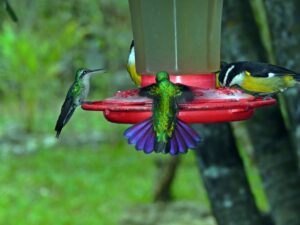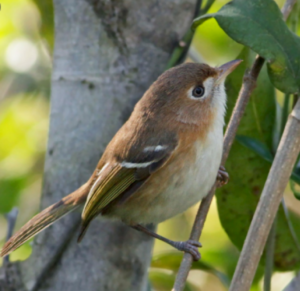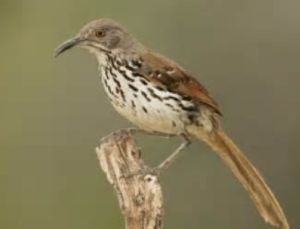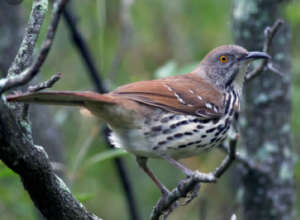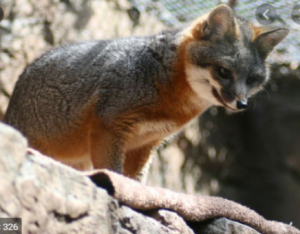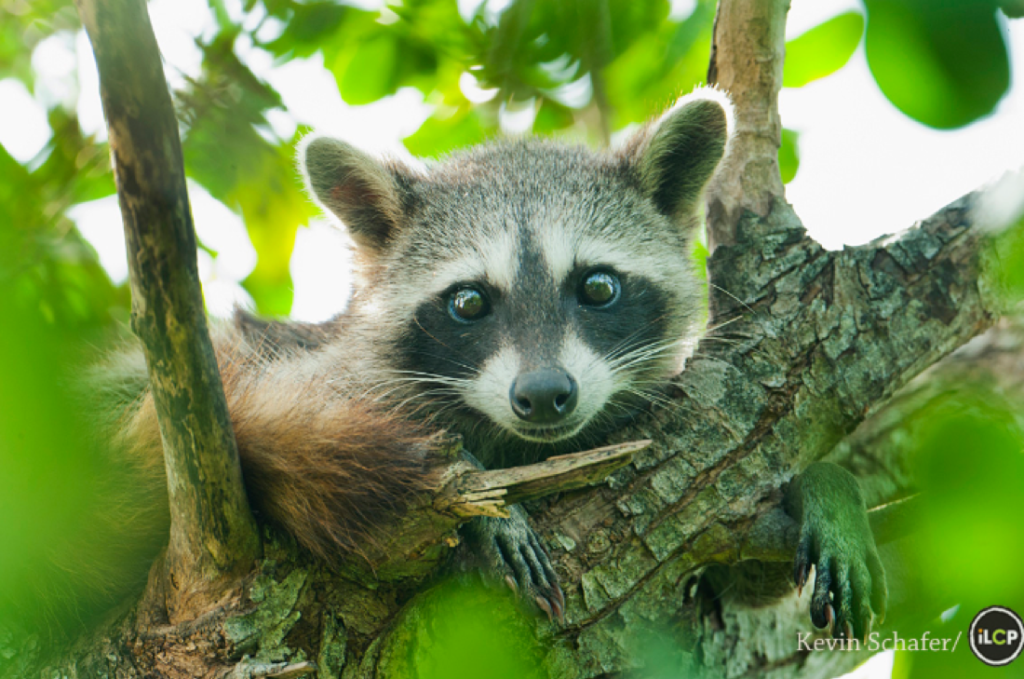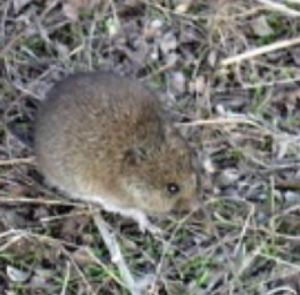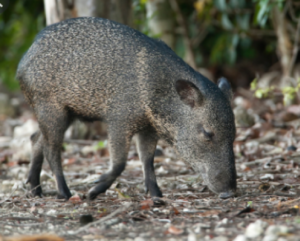Have you seen any of the animals that indigenous to Cozumel?
As a diver, we all know that the splendid toadfish is an indigenous species to Cozumel. But that is not the only indigenous species that calls Cozumel and ONLY Cozumel it’s home. In total there are about 9 species of animals. 1 fish, 4 birds and 4 animals. And of the mammals, 3 of them are carnivorous. That is quite unusual for an island. Most islands do not sustain even 1, much less 3 species of carnivorous mammals.
How many can you name?
1 – Cozumel Splendid Toadfish
2 – Cozumel Emerald Hummingbird
3 – Cozumel Coati
4 – Cozumel Vireo
5 – Cozumel Thrasher
6 – Cozumel Fox
7 – Cozumel Island/Pygmy Raccoon
8 –Cozumel Island Harvest Mouse
9 – Cozumel Wren
And considered but not verified – Collared Peccary
Cozumel Splendid Toad Fish
Have you ever been on a night dive, and here the distinct sounds of like… a toad croaking, 3 times in a row? Sometimes so loud that you can actually feel the vibrations in your chest? Well, you have been so close to a splendid toadfish. They usually are hidden in a small hole or under some coral, with just their head sticking out, and make that sound using their swim bladders. What do they look like? First you will notice that they have whiskers like a catfish, and are blue and white vertically striped. If you are lucky enough to every see one out, they have bright yellow dorsal and pectoral fins. Beautiful! They are the only underwater indigenous creature to Cozumel. Actually, there are a number of indigenous toadfish around the Caribbean, 2 of which ae found in the outer atolls of Belize. Toadfish can be found all around the world, with a few species living in fresh water.
Make sure you have your volume up to hear the distinctive Cozumel Splendid Toad Fish call. And, if you list close enough you can also hear another Toad Fish in the distance.
Their parenting techniques are quite unique for marine fish. The male will create the nest and attract females by singing. Sounds more like grunting to me… The female enters the nest and lays her eggs, which are quite sticky and attach them to the side of the nest, and then she leaves. The male will continue to attract more females, so as to have a variety of fertilized eggs. This is a perfect example of brothers (and sisters) from another mother! 😉 Once the eggs are fertilized, the embryos will quickly develop and remain attached to the side of the nest for about 3 – 4 weeks. During this time, the male will guard the nest and not leave that immediate area, so he must survive on a limited amount of food. Once the babies hatch, they still are in Dad’s nest until they are large enough to fend for themselves.
Cozumel Emerald Hummingbird
Did you now that Mexico is the home of 12 indigenous species of hummingbirds? And 1 of those is found ONLY in Cozumel – the Cozumel Emerald Hummingbird. It’s distinguished from other hummingbirds by its tale. It has a forked tale as opposed to a fan style tale.
Hummingbirds, in general, weigh less than a nickel. Which is surprising since 30% of their body weight are the pectoral muscles that are used for flying. Their heart beats 1,200 times per minute. To compare, a human heart beats 60 – 100 times per minute. No wonder they need to consume 50% of their bodyweight in SUGAR every day.
They are able to perch on their legs, and slide a bit sideways, but they cannot hop or walk like most other birds. Their legs are too light. 5 years is usually how long they live, although they been found to live up to 10 years, Wow! That means in 5 years, their heart will be beaten almost 9 million times. These beautiful birds are truly amazing to watch at the feeders in Village Tan Kah. You can see the birds feeding, but also the rivalries and interactions between them. They are so cute !
Cozumel Coati
Also known as a Coatimundi, or a Pizote, these beautiful mammals look like a bunch of animals all merged together. They have an elongated snout, similar to a possum but they are covered in fur. Their striped tail resembles that of a raccoon, but it is longer and used more like a monkey uses it’s tail. The tail usually measures as long as the body. The body is similar in shape to a fox. They sustain themselves on fruits and bugs like larval beetles, scorpions, centipedes, spiders, ants and termites, along with lizards, and small mammals, rodents and the such.
In the wild, the females and young males up to 2 yrs old will form bands and live and forage together. At about 2 years of age, the males will separate from the band and begin a mostly solitary existence. Females become sexually mature at 3 years of age while the males take a year longer. When it is time for mating, the female group will allow 1 and only 1 male to join and he mates with all of the females. So all of the kits come from 1 father. Once pregnant, the female will separate from the group and build a nest in a tree. After about 11 weeks, she will give birth of a little of 3-7 kits. About 6 weeks, the female and her young will rejoin the group.
Coati can be found all over Latin American. This species here on the island was originally thought to be a subspecies of the white-nosed Coati that resides all over on the Yucatan Peninsula. But was later proven to be its own species. They are smaller and have much softer fur. They differ from their cousins, the raccoon, by the fact that Coati are daytime animals, whereas raccoons are nighttime creatures. You can see these out in the jungle by San Gervacio, or by the car ferry that crosses to Playa del Carmen. Unfortunately, they are often caught and made into pets. But be VERY careful. They look so cute and innocent, but can be very mean and have a nasty bite !
Cozumel Vireo
The Vireo is in the songbird family. Vireo in Latin means a green migratory bird. Sound non-descript? It is. That is why they are easily confused with Warblers, Flycatchers and Kinglets. These birds, especially the males, love to sing and sing all day long. Up 20,000 times a day ! Their nests here are cup shaped and hanging from a V in the trees branches. Once they have their spot, they pretty much stay in that area, except when they are migrating. But I cannot find information if the endemic species here migrates or not. There is not a lot of info on them as their numbers are in decline thanks to the Boa Constrictors that live here. Oh, you did not know that there are boas here on the island??
Cozumel Thrasher
A thrasher is part of the mockingbird family and is the most critically endangered bird in Mexico. They hope that it still exists… but have not been spotted in many years. They live on the ground and will run away before it flies. This probably has led to its demise, especially due to the Boa Constrictors. The Boas were introduced to the island in 1971, and the population really exploded in 1991. And since then, many of the indigenous species populations are in decline. It seems like every time a hurricane hits, the populations, of the Thrashers declines. They were thought to be extinct after Roxanne hit in 1995, but was seen again in 2004. Since then, no sightings have been confirmed. This bird is easily confused with the long-billed thrasher. Fingers are crossed that this species is not extinct.
Can you tell the difference??
Can you guess which movie they were filming here that introduced
The Boa Constrictors to the island???
Keeping reading to find the answer.
Cozumel Island Fox
No, I am not talking about myself. Just kidding…. I am talking about an actual animal that is close to extinction or now possibly extinct. The last sighting of it was in 2001, but who knows. With the stay at home orders, we have seen deer and peccaries walking the streets of Cozumel. Maybe a fox will show up…. Studies show that this mammal has been inhabiting this island for over 5,000 years meaning they lived here before humans did. They are considered a dwarf fox, measuring about ¾ of the size of a grey fox. And like most other species, they dwell in a den, and birth anywhere from 1 – 5 kits at a time. Only time will tell if we are lucky enough to find one.
Cozumel Island Raccoon aka Cozumel Pygmy Raccoon
But do you know how endangered they are?? They are the world’s most endangered carnivore. It is believed that there are about 250 – 300 left here on the island, although some people believe that there are more. Yet another page says only 192…. Think they found them all? You have probably seen them down by the Palancar pier, and are seen up by the access to Passion Island to the north. They are easy to find here but the reality is that they are really endangered. When you see them, your first thought is that they are similar to the nasty pest that we are accustomed to see in the states. Just as the name indicates, these guys are only about ½ the size, have a more rounded snout, and the fur is much shorter. They like to eat, crabs, fruit, frogs, lizards and insects. But really, 50% of their diet is crabs. Due to their love for crabs, they usually inhabit mangroves and are found close to the water. So, feeding them tortillas, potato chips or cake is probably not that healthy for them.
This little guys are great climbers. And since their rear feet can rotate 180 degrees, they can descend from trees head-first. They mate with multiple partners during the months of September and November. After 9 weeks or so of gestation, females with birth 2-5 cubs. They are weaned after about 16 weeks and are completely independent at 10 months old. Females are sexually mature at 1 year, while males take a bit longer, at 2 years of age. Besides loss of habitat, diseases from ferel cats, and dogs are also killing them, although some of the raccoons have developed anti-bodies – YEAH! The main threat to this species has been a loss of habitat, however dogs are also known to kill them, and they have contracted diseases from feral cats, although some of the raccoons have developed anti-bodies to these disease – YEAH!!
National Geographic has a blog dedicated to these cute little fury animals. Click Here to be taken to their blog.
Cozumel Harvest Mouse
This cute little nocturnal mouse is found in the jungle here, and are semiarboreal, meaning they can climb trees. Or partially at least. Unfortunately, this tiny little mouse is also critically endangered and feared to be on the brink of extinction. The last count was taken in 2017 and there were only 152 adults. Feral cats and dogs like to feed on them, along with the Boas that were recently introduced to the island. Habitat destruction and Flooding is also taking its toll on the population.
Cozumel Wren
Did you know that Wrens are the most widely distributed birds in all of the Americas? I don’t think we will have to worry about them going extinct. These little guys are great to have around because their diet consists of insects, primarily butterfly and moth larvae, along with spiders and snails. Females are very particular about their nests. If she does not like how the male isconstucting the next, she jumps right in and throws out the sticks. They are very territorial, and will remain very close to the next if there are eggs or young to protect. They will often fill rival species nests with sticks, rendering them unusable. This bird is thankfully common here on the island.
Collared Peccary aka Javelina
Now, there is a 10th animal that is sometimes listed as a separate species. And if you have stayed at the Village Tan Kah, you have probably seen them in the backyard. It is the collared peccary, aka javelina. The ones here in Cozumel are the shortest of all peccaries, and their snout is smaller. These small… pigs are found all around the equator, since they can tolerate temperatures up to 113 F in the day. They are also found pretty far north in the southern US since they can tolerate freezing temps in the evening. They like to live in dryer areas, surviving by eating vegetation that is full of water, such as cactus.
Their diet primarily consists of roots, tubers, leaves, fruits and flowers, as well as invertebrates and small vertebrates. They can breed all year long but the peak is during the winter months (Nov-Mar). Mating is with multiple partners, with females only giving birth to 1-4 babies. But usually only 1 or 2 survive. The newborns will follow mom for a few months. If you have been close to one of them, they get anxious and begin to chatter their teeth, even though they are now accustomed to humans. No matter how cute they look, they are still wild animals and have often as a pack attacked single dogs. They are not considered endangered nor threatened.
So, did you figure out which movie introduced the boas to the island???
Think it was Against All Odds? Nope. That was filmed here in the early 1980’s. You’re probably not familiar with the movie because it was a Spanish film called El Jardin de Tia Isabel (Aunt Isabel’s Garden). An animal wrangler was brought in along with the Boas, Peccaries, and other animals for the movie. After the filming, guess what? You’re right – he just left them behind and since then, the Boas have been proliferating. Sometime having up to 60 live-born offspring every 2 years.

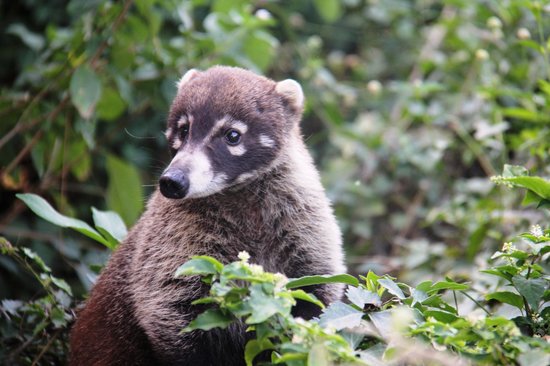
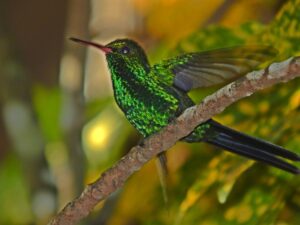 Cozumel Emerald Hummingbird with forked tail
Cozumel Emerald Hummingbird with forked tail